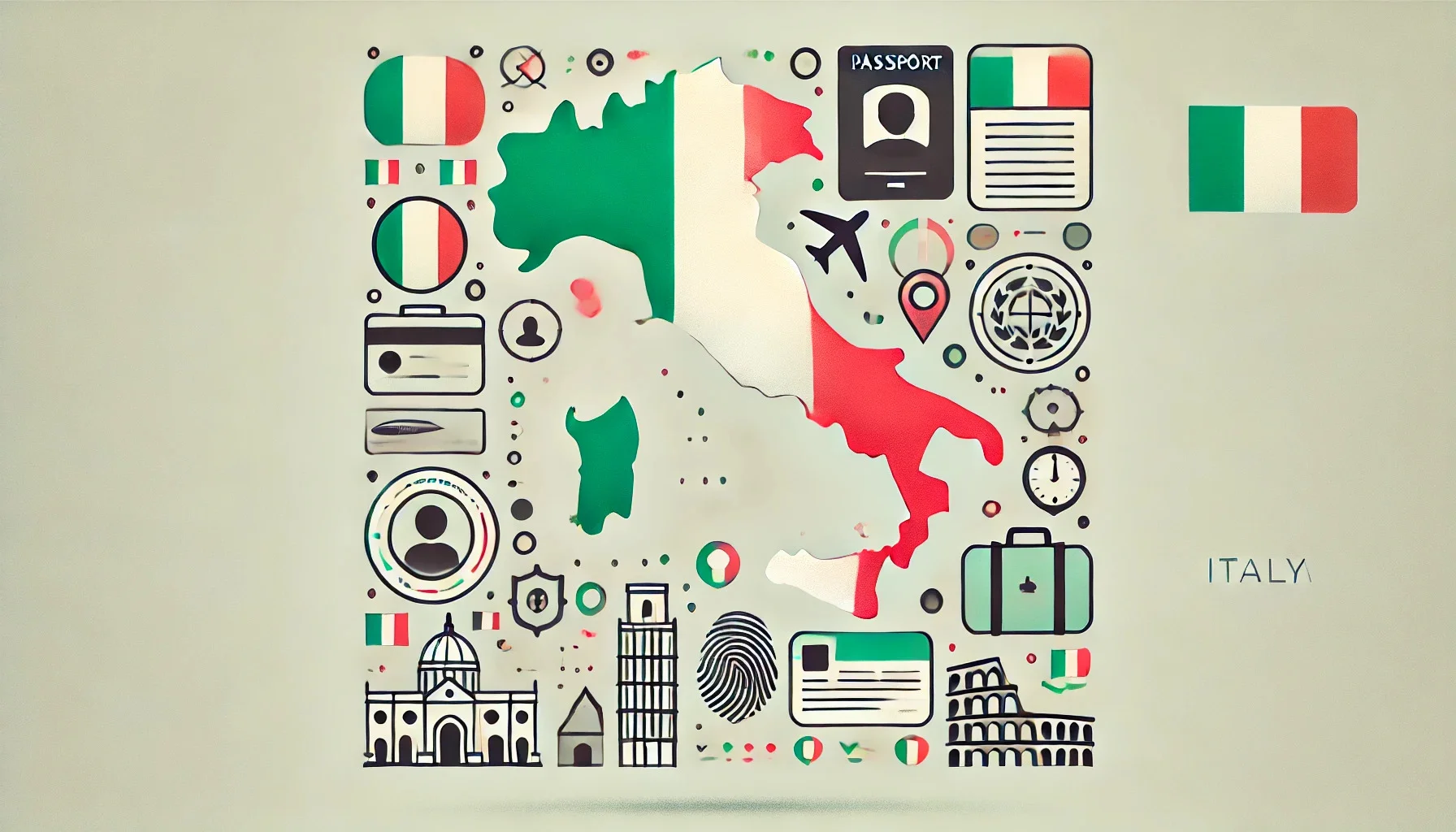How to Get a Residence Permit in Italy 2025
120
9/24/2025

How to Get a Residence Permit in Italy 2025
Getting a residence permit in Italy in 2025 begins with choosing the correct route and preparing a complete, consistent file. This guide explains the main options — elective residence, employed work and EU Blue Card, investor and startup, family reunification, study, and the digital nomad route — and shows the documents, indicative fees, processing times, renewals, and the realistic path to long-term residence and citizenship.
People usually talk about a “residence permit in Italy”, but the practical sequence is an entry visa where required, followed by a local application for a permesso di soggiorno after arrival. With continuous lawful residence, many applicants reach five years for the long-term EU residence card and can later meet the residence timeline for Italian citizenship.
Key terms (2025)
- Permesso di soggiorno — the Italian residence permit issued after entry on the correct national visa.
- Residenza elettiva (Elective Residence) — for financially self-sufficient applicants with accommodation; no employed work in Italy.
- Decreto Flussi — the annual framework that opens quotas for several employed work categories.
- EU Blue Card — a route for highly qualified professionals with a qualifying employment contract and salary level.
- Investor Visa for Italy — residence linked to qualifying investments or donations with predefined thresholds.
- Startup or self-employment — founder and regulated self-employed options subject to specific authorizations.
- Ricongiungimento familiare — family reunification with an eligible sponsor resident in Italy.
- Anagrafe and residenza — municipal registration of address; commonly required for renewals and proof of residence.
- Codice fiscale — Italian tax ID used across applications, contracts, and registrations.
Routes at a glance (one clear table)
| Route (2025) | Who it fits | Typical validity | Work rights | Path to long-term EU card | Citizenship timeline (general) |
|---|---|---|---|---|---|
| Elective Residence | Financially self-sufficient with stable income and accommodation | 1 year initially, renewable | No employed work; self-employment restricted | Usually after 5 years of continuous stay | Commonly around 10 years of residence |
| Work permit (Decreto Flussi) | Employees hired by Italian employers under quotas | Up to 1–2 years, renewable | Yes, for the sponsoring employer/role | Counts toward 5-year threshold | Commonly around 10 years of residence |
| EU Blue Card | Highly qualified workers with salary above threshold | Up to 2 years, renewable | Yes; mobility rights within EU Blue Card rules | Counts toward 5 years | Commonly around 10 years of residence |
| Investor Visa | Applicants meeting national investment or donation thresholds | 2 years initially, renewable | Residence rights; employment depends on category | Counts toward 5 years if continuous | Commonly around 10 years of residence |
| Startup / self-employment | Founders and regulated professions with authorization | 1–2 years, renewable | Yes, within authorized activity | Counts toward 5 years | Commonly around 10 years of residence |
| Family reunification | Spouses, minor children, and eligible dependants of residents | Aligned to sponsor’s status, renewable | Work rights are generally available | Counts toward 5 years | Commonly around 10 years of residence |
| Study | Students in accredited Italian programs | For program duration, renewable | Limited allowances; conversion possible later | Counts once converted to standard residence | Depends on conversion and continuity |
| Digital nomad | Remote professionals meeting income and qualification criteria | Often 1 year, renewable | Work is for foreign employer/clients; local employment restricted | Counts if residence remains continuous | Commonly around 10 years of residence |
Step-by-step: from decision to card
- Define your real activity. Match lifestyle, employment, investment, study, or family situation to the correct route to avoid later corrections.
- Confirm eligibility and gather proofs. Prepare accommodation evidence, income or investment proofs, insurance, education or employment contracts, and civil status records.
- Apply for the entry visa when required. Submit the national visa aligned to the chosen route and keep copies of every receipt and form.
- Enter Italy and file for the permesso di soggiorno. Use the application kit within the legal deadline, book biometrics at the questura, and track all barcodes and notices.
- Attend biometrics and respond quickly. Bring originals and certified translations or legalizations; supply any requested clarifications without delay.
- Collect the residence card and register locally. Register your address with the anagrafe and ensure your codice fiscale is active and correct.
- Maintain compliance and plan renewals. Track expiries, keep insurance and accommodation continuous, and update employer, company, or family details as they change.
Documents checklist (build a complete 2025 file)
- Passport with validity buffer, plus full-page copies.
- Recent biometric photos that meet Italian specifications.
- Codice fiscale or application receipt; proof of accommodation such as a rental contract, hosted declaration, or property title.
- Health insurance appropriate to the route and family size.
- Proof of funds or income: bank statements, salaries, dividends, pensions, investment confirmations.
- Route-specific papers:
- Elective residence — stable passive income and accommodation proofs.
- Work / EU Blue Card — employment contract, employer clearances, qualification proofs, salary level.
- Investor — pre-approval for the selected investment or donation category.
- Startup / self-employment — business plan, authorizations, and professional registrations.
- Family — marriage or birth certificates and sponsor’s status and accommodation capacity.
- Study — enrollment documents and maintenance funds.
- Digital nomad — income threshold and remote-work documentation.
- Police clearance and certified translations or legalizations where requested.
- Receipts, fee payments, application barcodes, and appointment confirmations.
Costs and timeline (indicative for 2025)
- Government fees include application, card printing, and stamp duties; amounts vary by route and duration.
- Translations and legalizations add cost for foreign civil status records; plan budget and time for apostille or consular legalization.
- Professional support is optional and varies by scope, investment category, and family size.
- Processing time ranges from a few weeks to several months depending on route, local workload, and seasonality. Build buffers for peak periods.
Renewals and long-term residence
Renew early and avoid gaps. Many categories allow progressive renewals that lead to the five-year mark for the long-term EU residence permit. Keep evidence of continuous lawful stay, accommodation, income, and integration where applicable. Ensure that municipal registration and tax ID details remain consistent with your address and contracts.
Path to citizenship (high-level overview)
For most non-EU residents, a common path is naturalization after approximately ten years of legal residence in Italy, subject to general requirements such as clean criminal record checks and integration conditions. Other routes exist by descent for those with provable Italian lineage, and by marriage with time requirements. Track presence, renew on time, and keep your documentation set complete to avoid resets.
Compliance and practical cautions
- Choose the route that truly matches your activities; elective residence is not intended for local employment.
- Keep anagrafe registration aligned with your lease or hosted declaration to support renewals and long-term status.
- Track physical presence if your goal is the long-term EU card or citizenship; long absences can slow progress.
- Maintain a single organized file with copies of all submissions, receipts, and communications for quick responses.
Common mistakes to avoid
- Starting on the wrong visa and hoping to fix it later, which often prolongs processing.
- Underestimating translations or legalizations needed for civil status documents.
- Missing municipal registration steps after collecting the card, causing problems at renewal.
- Letting insurance lapse or failing to update employer or company data after changes.
- Assuming that remote work automatically permits local employment without conversion.
Expert opinion
“The strongest Italian residence files combine a correctly chosen route, full documentation from day one, and proactive renewal planning. Most delays come from route mismatches and missing civil records.” — VelesClub Int. immigration team
FAQ
Q: Do I need a national visa before applying for the residence permit? A: Many non-EU applicants do. The visa should match your intended route and is followed by a local permesso application.
Q: When can I apply for the long-term EU residence card? A: Typically after five years of continuous lawful residence, assuming the general conditions are met.
Q: Can I work on elective residence status? A: No employed work is allowed. Consider a work permit, EU Blue Card, startup or self-employment route, or convert when eligible.
Q: Does study time count toward long-term residence? A: It supports later conversion, and time may count once you hold a standard residence category.
Q: When is citizenship possible by residence? A: A common pathway is naturalization after about ten years of legal residence; timelines vary by route and continuity.
Next steps
If you want structured help in 2025, start with the tools on our main platform, then review country-specific checklists inside the Residency & Citizenship hub to assemble your application file and timeline.
Are there any questions or do you need advice?
Leave a request
Our expert will contact you to discuss tasks, choose solutions and be in touch at each stage of the transaction.
